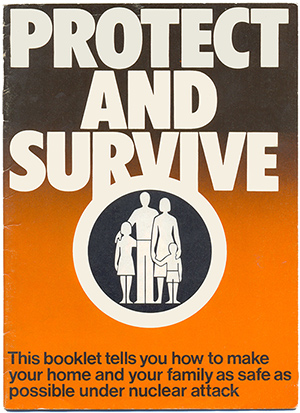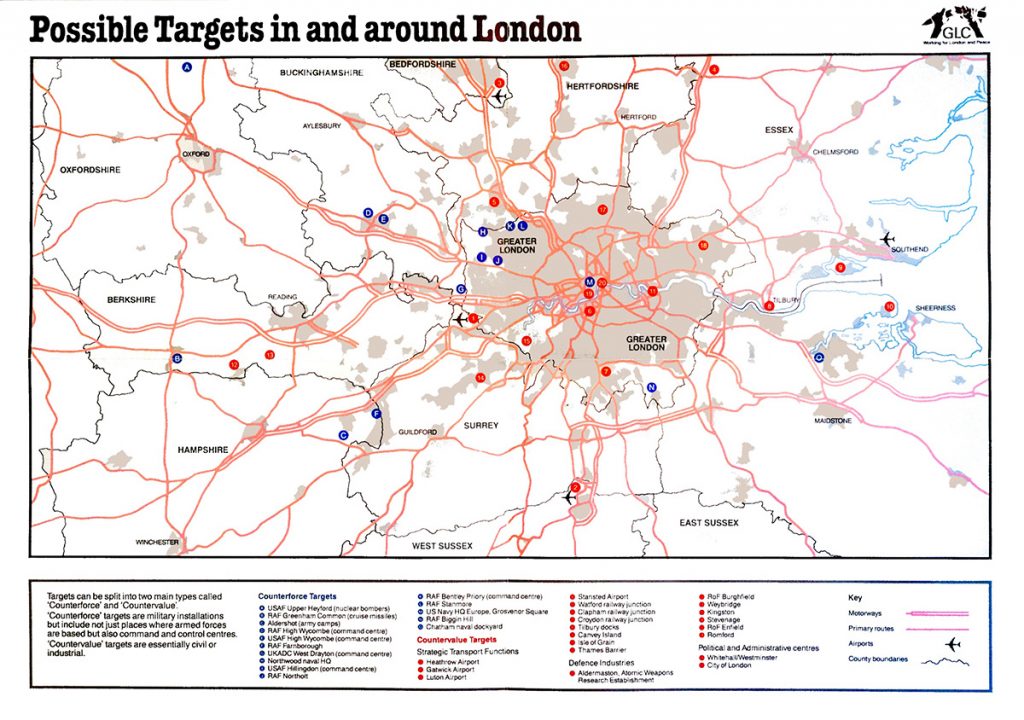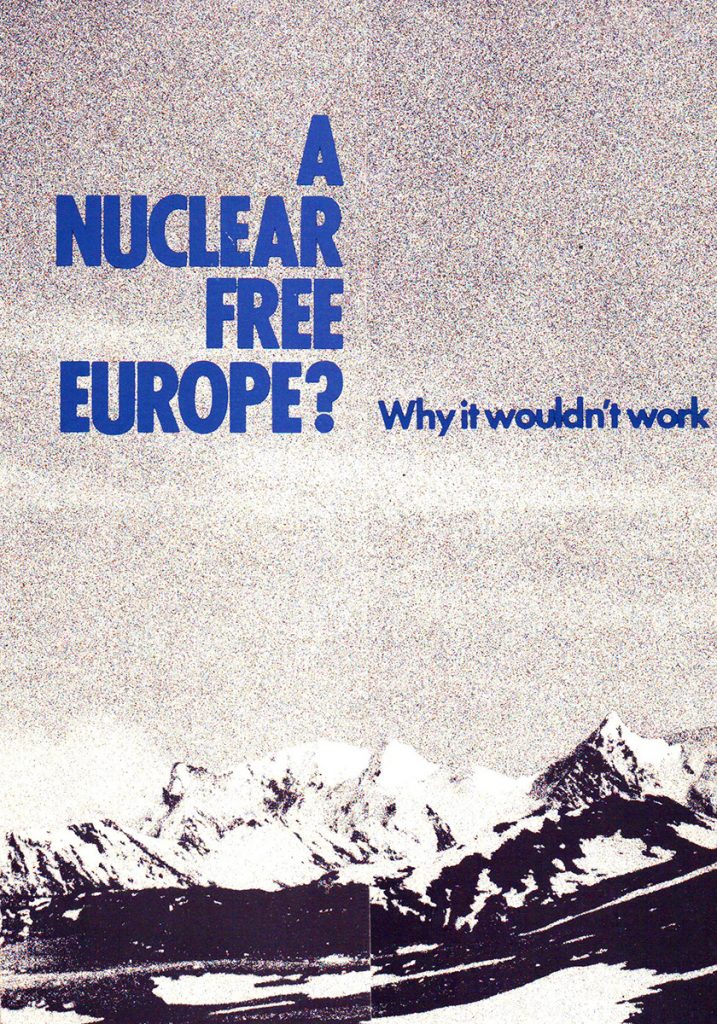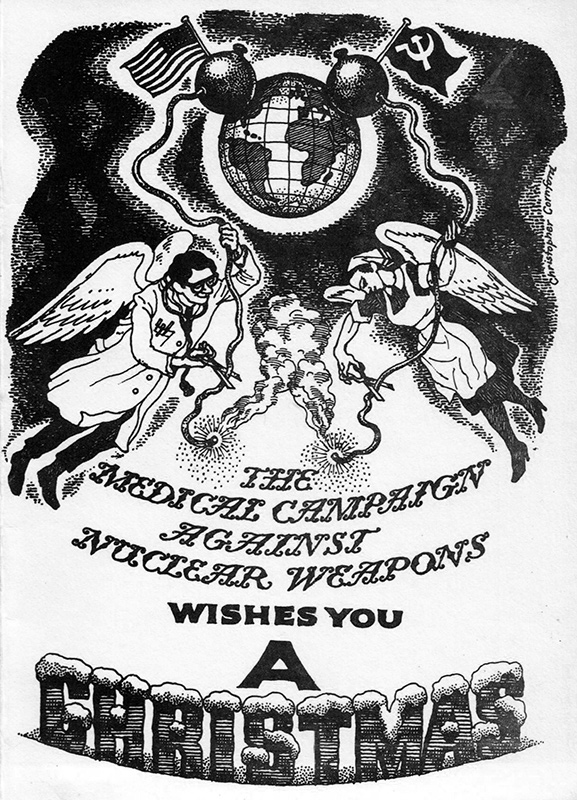For #LondonHistoryDay, here’s a very special map of London.
1980s
A Nuclear Free Europe?
The line between public information and propaganda can be quite thin, but this little leaflet is pretty solidly in the latter camp.
Published in 1982 by the Ministry of Defence’s Public Relations division, ‘A Nuclear Free Europe?’ set out their view that the call for a Europe free from nuclear weapons was unrealistic.
The cover shows an unidentified cold, grey mountain range – a hint at the reason ‘why it wouldn’t work’ – the subtitle of the leaflet.
The design of the leaflet itself, which opens up from the centre, has quite an impact. It would be reasonable to expect, on opening the cover, to find several detailed arguments inside.
Instead, you’re presented with just one point.
The Ural mountain range, which forms a north-south belt across Russia, traditionally marks the eastern boundary of Europe. Even if the USSR had moved its nuclear weapons to a position technically outside of Europe, most of Europe – including Britain – would still be within range of nuclear attack.
We wish you a… Christmas
The Medical Campaign Against Nuclear Weapons (MCANW) was formed in 1980 as an organisation for medical professionals concerned by nuclear weapons.
This Christmas card is at once gloomy (wishing you, as it does, ‘A Christmas’) and optimistic, portraying healthcare workers cutting the fuses on both sides of bombs on both sides of the Iron Curtain.
The card was designed by Professor Christopher Cornford, a highly-accomplished artist, writer and active CND member who designed posters and drew for the peace movement.
MCANW merged with the Medical Association for the Prevention of War (MAPW) in 1992 to form Medical Action for Global Security, or Medact. Today, they focus on health, peace and security, economic justice, the climate and human rights. Medact’s (and MCANW’s) archives are looked after by the Wellcome Collection in London.
Merry Christmas everyone!
Looking for more?
My book, Nuclear War in the UK (Four Corners Books, 2019) is packed with images of British public information campaigns, restricted documents, propaganda and protest spanning the length of the Cold War.
It also tells the story of how successive UK governments tried to explain the threat of nuclear attack to the public. It costs just £10 – find out more here.
SOXMIS and BRIXMIS – ‘legal spying’ on the front lines of the Cold War
Shortly after the Second World War, with the partition of Germany into four Allied zones, the four former allies – Britain, the US, France and the USSR – set up ‘military liaison missions’.
These diplomatic organisations were designed to encourage dialogue and understanding between the powers now operating within Germany. In reality, they ended up providing the perfect opportunity to carry out intelligence-gathering missions in plain sight.
The British and Soviet missions, BRIXMIS and SOXMIS, were the first to be established with the Robertson-Malinin Agreement on 16th September 1946. (Officially, BRIXMIS was the British Commanders’-in-Chief Mission to the Soviet Forces in Germany, but that’s a bit more of a mouthful.)
The French and US militaries also set up their own military liaison missions, known as La Mission Militaire Française de Liaison – MMFL (or FMLM in English) – and USMLM. However, BRIXMIS was bigger than both, and the exploits of BRIXMIS and SOXMIS played out as one of the more curious stories of Cold War diplomacy.
Protect and Survive – Creating the Campaign
This first blog post is on one of my pet topics, the myth and reality surrounding the Protect and Survive public information campaign. I’d welcome any feedback, especially if you spot any inaccuracies or omissions – drop me a line on Twitter.
“The average person, if given the choice of being blasted or frizzled on the one hand, or taking his chance of dying a lingering death from fallout on the other, would opt for the latter course every time…” – Home Office memo, 3rd September 1975

Protect and Survive is best known today as a 1980s pamphlet offering advice – bad advice – on protecting your family and property if nuclear weapons were ever used against the UK. Met with ridicule by a sceptical media, and derided in popular culture, Protect and Survive has been become lodged in the popular imagination as an unusual, unsettling and ultimately ineffectual campaign.
Influenced by the media, and reinforced by every retelling, a myth developed around Protect and Survive which has created a distorted, parallel version of the campaign. It has even led to false memories – people who claim they were frightened out of their wits by the pamphlet’s arrival in their letterbox, even though it was never actually distributed like that; people terrified by the broadcast of the animated films on TV (of which only extracts were ever shown). Of course, the myth built up around Protect and Survive is often quite far removed from the reality.





